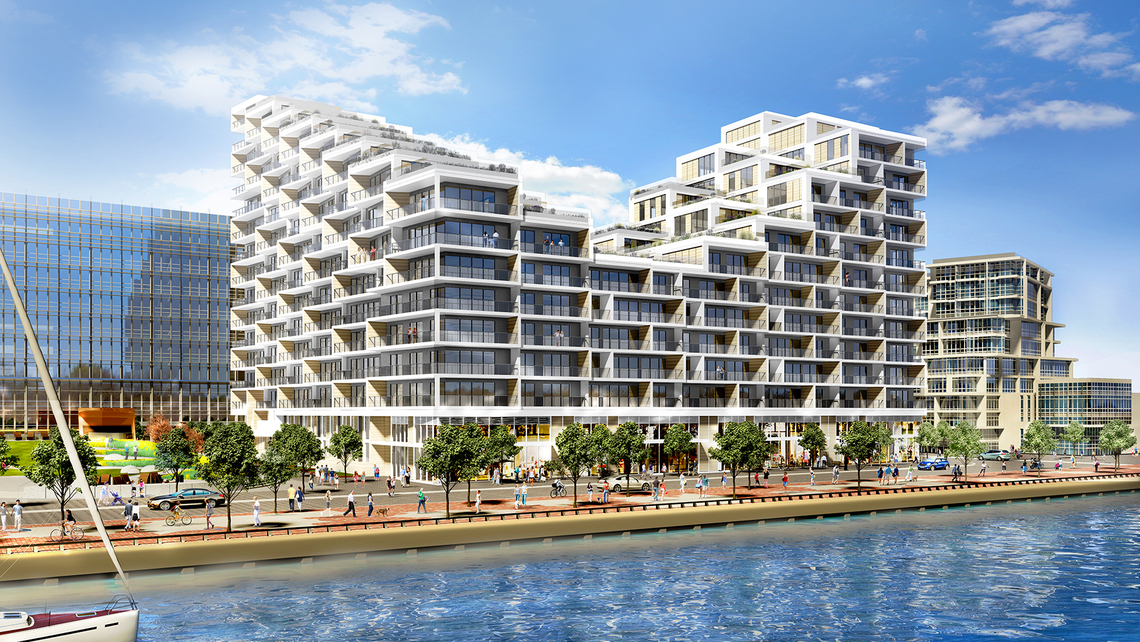Aquabella

Most of Aquabella's suites have balconies, while several on the upper levels feature beautiful terraces - both intended to maximise the waterfront views.

Balconies are insulated with Isokorb® structural thermal breaks to prevent thermal bridging.

Structural thermal breaks are secured to the rebar on the balconies and interior slabs.

Newly installed structural thermal breaks cure between the balcony and interior slabs.

Exterior of the completed Aquabella condominiums depict layered architectural design and extensive balconies which are insulated with Isokorb® structural thermal breaks.
Rising above Toronto’s Bayside community, a mixed-use neighbourhood on the shore of Lake Ontario, stands the 14-storey Aquabella condominium development. The 174-suite concrete building is the third of four Bayside condominiums developed by real-estate firms Hines and Tridel. The developers are aiming for LEED Platinum Certification, as well as compliance with Toronto Green Standard (TGS) requirements. To achieve the required energy targets, the Aquabella project team pursued active strategies in the form of efficient mechanical systems, and passive strategies that impact building performance such as building orientation, building envelope materials, windows and daylighting, and natural ventilation.
A high-performance building envelope was desired to passively reduce cooling and heating energy use and resulting utility costs. To minimise thermal bridging at balconies and maintain a continuous insulated building envelope, more than a mile of Isokorb® structural thermal breaks were installed between balconies and the interior floor slabs. Structural thermal breaks consist of an insulation module with stainless steel rebar running through the insulation for structural strength. The module's expanded foam is approximately 98% less conductive than concrete, while its stainless steel rebar is approximately one-third as conductive as carbon steel rebar, reducing heat loss at balcony penetrations by up to 90 percent, while preventing interior condensation and mould growth.
Click here to learn more about this case study.
3XN Architects
Kirkor Architects and Planners
Stephenson Engineering
EQ Building Performance Inc.
Tridel / Hines
Deltera

